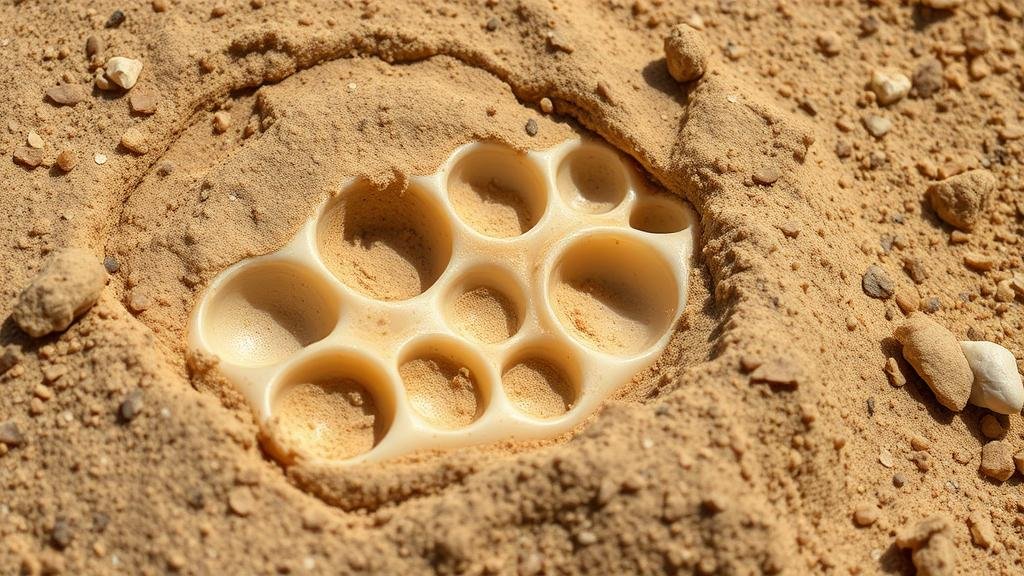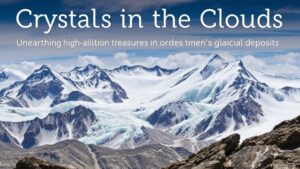Excavating dinosaur eggshell fragments in the arid expanses of Mongolia’s Gobi Desert.
Excavating Dinosaur Eggshell Fragments in Mongolia’s Gobi Desert
The Gobi Desert, one of the largest deserts in Asia, is a treasure trove for rockhounds and mineral collectors interested in paleontology. Its dry, arid expanses hold secrets from the age of dinosaurs, including a variety of fossils and intriguing dinosaur eggshell fragments. This article highlights the significance of these fragments, the excavation process, and practical tips for aspiring collectors.
The Significance of Dinosaur Eggshell Fragments
Dinosaur eggshells are not just fascinating relics; they provide valuable insights into the reproductive biology, environmental conditions, and survival strategies of prehistoric species. For example, isotopic analyses of eggshells can reveal details about the climate in which dinosaurs lived. A study by S. C. S. D. Lee (2015) showed that eggshells from the Gobi contained calcium carbonate signatures, suggesting a semi-arid environment conducive to dinosaur reproduction.
Plus, the presence of dinosaur eggshell fragments indicates breeding grounds. In Mongolia, the discovered dinosaura eggs, particularly from species such as *Oviraptorosauria* and *Sauropod*, continue to fascinate scientists and collectors alike. Some of these fragments measure up to 2 cm in thickness and can exhibit intricate textures, adding to their allure for collectors.
The Excavation Process
Excavating dinosaur eggshell fragments in the Gobi Desert requires meticulous planning and knowledge of the environment. Here’s a step-by-step guide:
- Research and Permissions: Before embarking on an excavation trip, it is crucial to research the specific areas known for dinosaur finds. Obtain necessary permits from local authorities, as excavating in restricted areas can lead to legal complications.
- Preparation: Equip yourself with essential tools such as a geological hammer, chisels, brushes, and a sturdy backpack. Also, consider protective gear such as gloves and sunblock due to the harsh environment.
- Site Selection: Ideal excavation sites are generally around riverbeds or areas where sedimentary layers are exposed. Look for signs of erosion and soft clay areas that can reveal fossilized remains.
- Excavation Techniques: Use careful excavation techniques to avoid damaging the eggshell fragments. Start with shallow digging and gradually work your way down. Use soft brushes to clean the area around the fossils without causing harm.
- Documentation: Maintain a detailed field journal of your findings, including GPS coordinates, sketches, and photographs to preserve the data for future reference.
Real-World Applications for Collectors
Dinosaur eggshell fragments can be a lucrative aspect of mineral collecting. As the demand for fossil specimens increases, these fragments are sought after by both collectors and researchers. For example, some collectors have successfully integrated dinosaur eggshell fragments into their displays, attracting significant attention at mineral shows.
Also, knowledge gained from these fragments can contribute to academic research, leading to advancing our understanding of dinosaur life cycles and ecological interactions. Collaborating with researchers can also enhance the authenticity and value of your collection.
Practical Tips for Collectors
- Join Local Clubs: Engage with local rockhounding and paleontology clubs to gain access to expert knowledge and possible excavation opportunities.
- Invest in Quality Equipment: Quality tools can make a significant difference in excavation efficiency and the preservation of fragile specimens.
- Stay Updated: Follow scientific journals and paleontology news to keep abreast of new discoveries and regulations related to fossil collecting.
- Network with Experts: Building relationships with paleontologists and seasoned collectors can provide invaluable insights and guidance.
Conclusion
Excavating dinosaur eggshell fragments in the Gobi Desert offers a unique blend of adventure, education, and community involvement for rockhounds and mineral collectors. By following proper excavation protocols and leveraging community resources, collectors can uncover and preserve these ancient wonders. Ultimately, engaging with this remarkable aspect of paleontology is not only a fulfillment of personal interests but also a contribution to the broader understanding of our planets prehistoric past.



